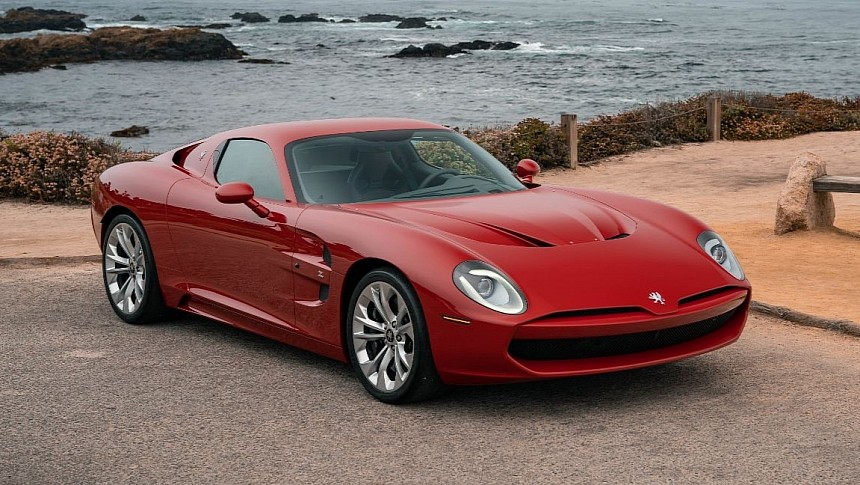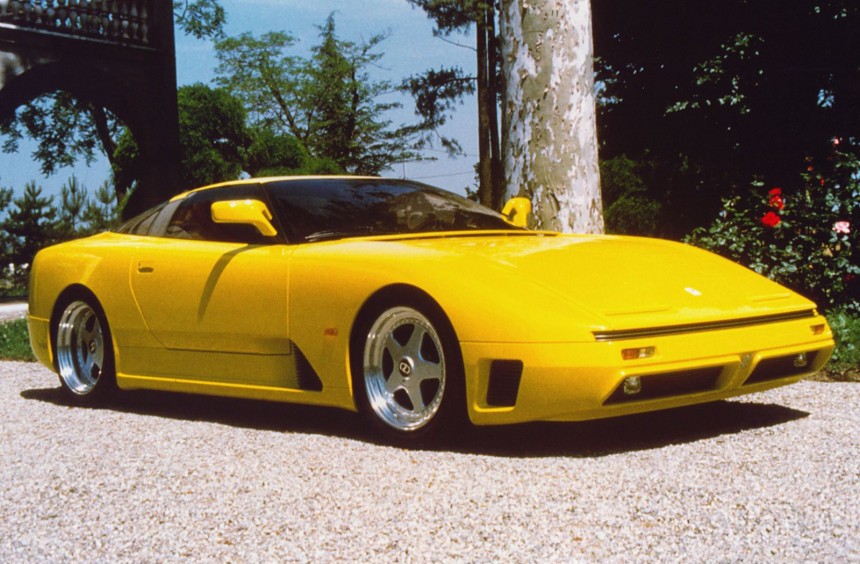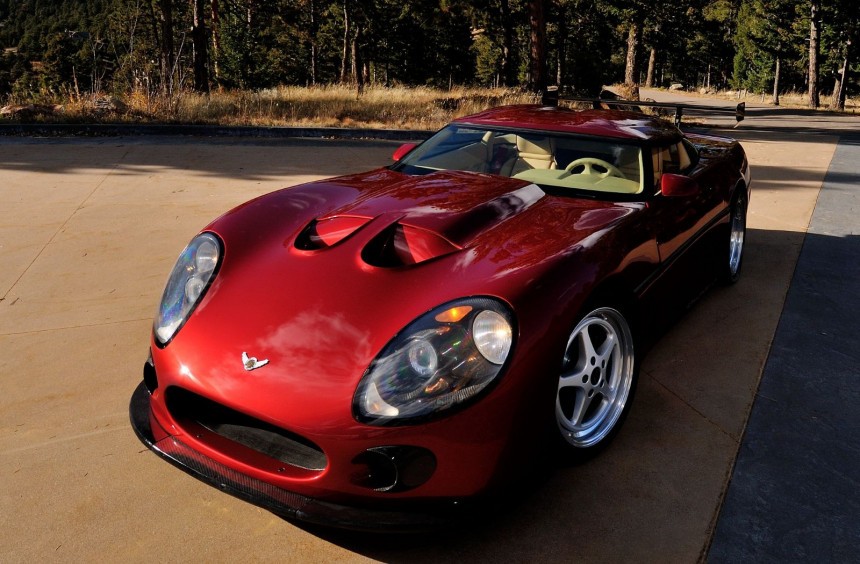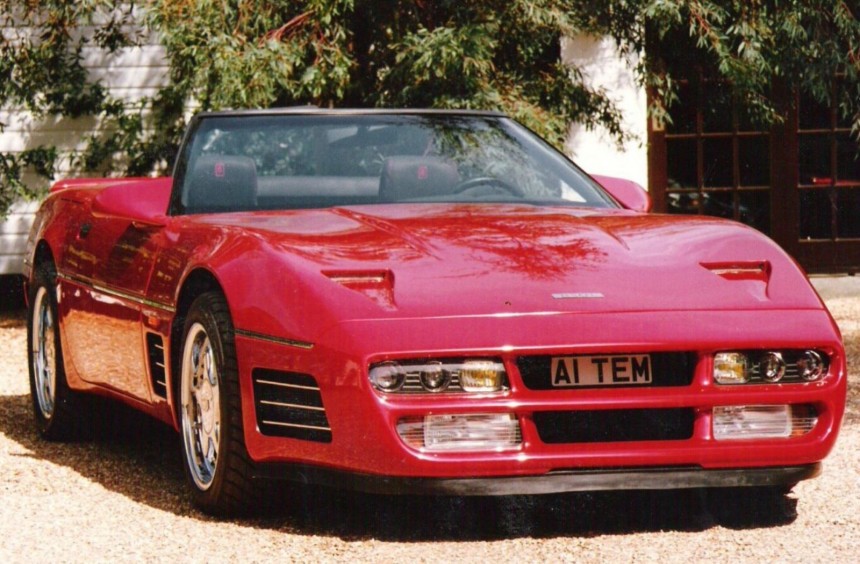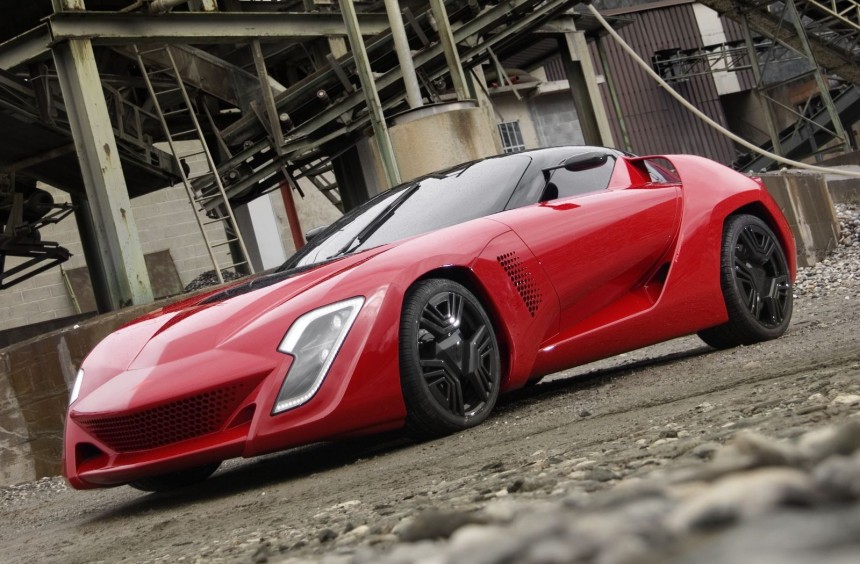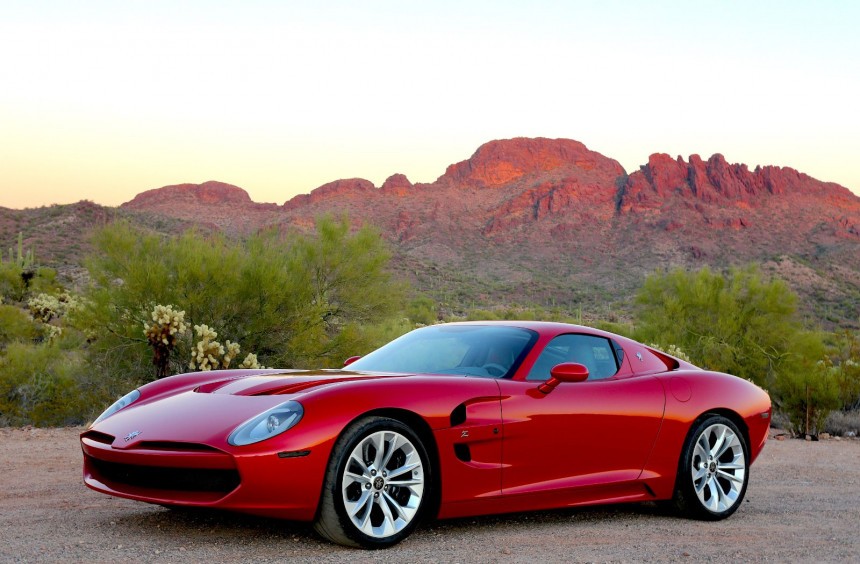Though they donned exquisite bodies with little to nothing in common with America's favorite sports car, these obscure supercars were all Corvettes underneath.
When it debuted in 1953, the Chevrolet Corvette aimed to demonstrate that the US auto industry could develop a thoroughbred supercar capable of rivaling its European counterparts.
As decades passed, the Corvette ceased trying to look European and morphed into an automotive icon with a unique style and allure.
Built around a solid chassis and available with powerful V8 engines, yet always carrying an appealing price tag, it became not just America's favorite sports car but a global phenomenon.
With an attractive price and an unmatched combination of quality, reliability, and power, the Corvette was also used as the building block for creating some impressive yet obscure supercars.
In 1989, Iso founder Renzo Rivolta's son Pierro attempted to cash in on the high-performance sports car boom by reviving the Iso Grifo - the gorgeous grand tourer of the 1960s and 1970s.
Like its predecessor, the new car used a Chevy powertrain, but this time, it also borrowed a Bowtie chassis.
The donor car selected by Iso engineers was none other than the C4 Corvette, which received a bespoke body designed by Marcello Gandini and some essential suspension tunning courtesy of race experts Dallara.
Unveiled in prototype form in 1991, the Iso Grifo 90 was powered by a 5.7-liter, Callaway-tuned LS6 rated at 490 hp.
It could allegedly sprit from 0 to 60 mph (100 kph) in 3.6 seconds and reach a top speed of 186 mph (300 kph).
Unfortunately, by the time Iso was ready to start production, interest in expensive supercars had dried up due to global financial turmoil, so the beautiful Grifo 90 didn't make it out of the prototype stage.
Fortunately, an Italian brand resurrected the project in 2007 and produced twelve units of the Grifo 90 on the backbone of the C5 Z06 'Vette.
Reeves Callaway and his crew at Callaway Cars are well-known among Corvette enthusiasts for tunning America's favorite sports car and developing some unique Callaway-badged Corvettes like the legendary Sledgehammer.
During the first half of the 1990s, the company also embarked on an ambitious project to race their modified Corvettes at Le Mans with a modified C4 called Callaway LM.
That project also spawned a crazy, street-legal one-off known as Callaway Super Speedster LM.
Based on the C4 ZR-1 with a heavily tuned suspension, the one-off received a completely new body designed by Paul Deutschman.
Under the hood, it hid the ZR-1's Lotus-designed LT5 V8, but thanks to the addition of an insane twin-turbocharged system, the V8 could make no less than 766 HP.
With all that power, the Callaway Super Speedster LM built in 1991 was not just a supercar but a downright hypercar, decades before the term became popular.
During the 1980s, former fashion designer Robert Jankel and his coachbuilding firm, Jankel Group, were developing ultra-luxurious versions of Rolls-Royce, Bentley, or Mercedes-Benz models.
However, in the 1990s, demand for those kind of cars dried up, so the British coachbuilder decided to build something more "affordable."
The project led to the development of the Tempest, a car that - like the previous entries on this list - was based on the C4 Corvette.
Though it resembled the American sports car, the Tempest's convertible body was designed and hand-built by Jenkel.
This Corvette-turned-British-supercar was available with either the donor Chevy's standard LT1 V8, a supercharged LT1 version, or a custom, supercharged TRACO unit.
Rated at 537 hp, the latter was built on a four-bolt competition Chevy block equipped with forged internals and topped off with a motorsport-derived cylinder head.
Between 1991 and 1993, around 35 examples of the Tempest were built, most of which featured the TRACO V8.
Bertone, one of the automotive world's most renowned design and coachbuilding companies, navigated murky financial waters during the second part of the 2010s.
To save the ship from drowning, Bertone pried away Jason Castriota from rivals Pininfarina and appointed him Director of Design.
The US-born stylist reasoned that turning the supercar-slaying C6 ZR1 into a legitimate Italian supercar would be the best way to save the company.
After finding an American buyer willing to finance the project, Castriota and his team went to work, documenting the 'Vette's transformation in a series of YouTube videos.
Named Mantide (mantis, in Italian), the Bertone supercar was built around the stock chassis and powertrain of the ZR1 but featured a brand-new, space-ship-like body with dihedral-opening doors that revealed a bespoke interior.
Thanks to the aerodynamic superiority of the new body, the Mantide was slightly faster than the ZR1 but also a lot more expensive.
After the original Mantide was delivered to its customer in 2011, Bertone considered a limited production run, floating around a $2 million price tag.
As you can imagine, nobody was willing to spend that much on a re-bodied C6 ZR1, so the project was canceled, and a few years later, Bertone filed for bankruptcy.
The Iso Grifo 90 wasn't the last attempt to relaunch the Italian brand and build a successor for the original car.
In 2017, coachbuilder Zagato launched an initiative to bring Iso back to life.
With the help of Polyphony Digital's Gran Turismo franchise, they launched a virtual concept in the seventh iteration of the video game.
Back in the real world, the success of the virtual concept convinced the Rivolta family to revive the company, and Zagato took on the task of designing the first modern car.
Called GTZ (Gran Turismo Zagato), the new Iso's design drew inspiration from the Grifo-based A3/C race car - which later became the Bizzarrini 5300GT.
Hands down one of the most gorgeous Italian supercars in recent memory, the GTZ's Zagato body hid a Corvette C7 Z06 underneath.
Consequently, power came from a 660-hp 6.2-litre supercharged LT4 that made the GTZ as powerful as it is beautiful.
The production version was unveiled in 2021 with plans to build only 19 units. Though this beauty is still in production, all cars were sold in just a few months after the official unveiling.
As decades passed, the Corvette ceased trying to look European and morphed into an automotive icon with a unique style and allure.
Built around a solid chassis and available with powerful V8 engines, yet always carrying an appealing price tag, it became not just America's favorite sports car but a global phenomenon.
With an attractive price and an unmatched combination of quality, reliability, and power, the Corvette was also used as the building block for creating some impressive yet obscure supercars.
Iso Grifo 90
Like its predecessor, the new car used a Chevy powertrain, but this time, it also borrowed a Bowtie chassis.
The donor car selected by Iso engineers was none other than the C4 Corvette, which received a bespoke body designed by Marcello Gandini and some essential suspension tunning courtesy of race experts Dallara.
Unveiled in prototype form in 1991, the Iso Grifo 90 was powered by a 5.7-liter, Callaway-tuned LS6 rated at 490 hp.
It could allegedly sprit from 0 to 60 mph (100 kph) in 3.6 seconds and reach a top speed of 186 mph (300 kph).
Unfortunately, by the time Iso was ready to start production, interest in expensive supercars had dried up due to global financial turmoil, so the beautiful Grifo 90 didn't make it out of the prototype stage.
Fortunately, an Italian brand resurrected the project in 2007 and produced twelve units of the Grifo 90 on the backbone of the C5 Z06 'Vette.
Callaway Super Speedster LM
During the first half of the 1990s, the company also embarked on an ambitious project to race their modified Corvettes at Le Mans with a modified C4 called Callaway LM.
That project also spawned a crazy, street-legal one-off known as Callaway Super Speedster LM.
Based on the C4 ZR-1 with a heavily tuned suspension, the one-off received a completely new body designed by Paul Deutschman.
Under the hood, it hid the ZR-1's Lotus-designed LT5 V8, but thanks to the addition of an insane twin-turbocharged system, the V8 could make no less than 766 HP.
With all that power, the Callaway Super Speedster LM built in 1991 was not just a supercar but a downright hypercar, decades before the term became popular.
Jankel Tempest
However, in the 1990s, demand for those kind of cars dried up, so the British coachbuilder decided to build something more "affordable."
The project led to the development of the Tempest, a car that - like the previous entries on this list - was based on the C4 Corvette.
Though it resembled the American sports car, the Tempest's convertible body was designed and hand-built by Jenkel.
This Corvette-turned-British-supercar was available with either the donor Chevy's standard LT1 V8, a supercharged LT1 version, or a custom, supercharged TRACO unit.
Rated at 537 hp, the latter was built on a four-bolt competition Chevy block equipped with forged internals and topped off with a motorsport-derived cylinder head.
Between 1991 and 1993, around 35 examples of the Tempest were built, most of which featured the TRACO V8.
Bertone Mantide
To save the ship from drowning, Bertone pried away Jason Castriota from rivals Pininfarina and appointed him Director of Design.
The US-born stylist reasoned that turning the supercar-slaying C6 ZR1 into a legitimate Italian supercar would be the best way to save the company.
After finding an American buyer willing to finance the project, Castriota and his team went to work, documenting the 'Vette's transformation in a series of YouTube videos.
Named Mantide (mantis, in Italian), the Bertone supercar was built around the stock chassis and powertrain of the ZR1 but featured a brand-new, space-ship-like body with dihedral-opening doors that revealed a bespoke interior.
Thanks to the aerodynamic superiority of the new body, the Mantide was slightly faster than the ZR1 but also a lot more expensive.
After the original Mantide was delivered to its customer in 2011, Bertone considered a limited production run, floating around a $2 million price tag.
As you can imagine, nobody was willing to spend that much on a re-bodied C6 ZR1, so the project was canceled, and a few years later, Bertone filed for bankruptcy.
IsoRivolta GTZ
In 2017, coachbuilder Zagato launched an initiative to bring Iso back to life.
With the help of Polyphony Digital's Gran Turismo franchise, they launched a virtual concept in the seventh iteration of the video game.
Back in the real world, the success of the virtual concept convinced the Rivolta family to revive the company, and Zagato took on the task of designing the first modern car.
Called GTZ (Gran Turismo Zagato), the new Iso's design drew inspiration from the Grifo-based A3/C race car - which later became the Bizzarrini 5300GT.
Hands down one of the most gorgeous Italian supercars in recent memory, the GTZ's Zagato body hid a Corvette C7 Z06 underneath.
Consequently, power came from a 660-hp 6.2-litre supercharged LT4 that made the GTZ as powerful as it is beautiful.
The production version was unveiled in 2021 with plans to build only 19 units. Though this beauty is still in production, all cars were sold in just a few months after the official unveiling.
